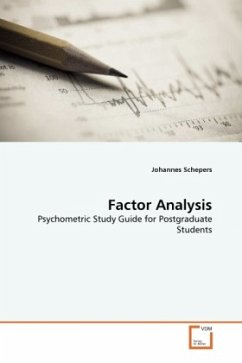The general intelligence factor is a controversial construct used in the field of psychology to quantify what is common to the scores of all intelligence tests. An illustration of Spearman's two-factor intelligence theory. Each small oval is a hypothetical mental test. The blue areas show the variance attributed to s, and the purple areas the variance attributed to g. Charles Spearman, an early psychometrician, found that schoolchildren's grades across seemingly unrelated subjects were positively correlated, and proposed that these correlations reflected the influence of a dominant factor, which he termed g for "general" intelligence. He developed a model where all variation in intelligence test scores can be explained by two factors. The first is the factor specific to an individual mental task: the individual abilities that would make a person more skilled at one cognitive task than another. The second is g, a general factor that governs performance on all cognitive tasks.
Bitte wählen Sie Ihr Anliegen aus.
Rechnungen
Retourenschein anfordern
Bestellstatus
Storno








